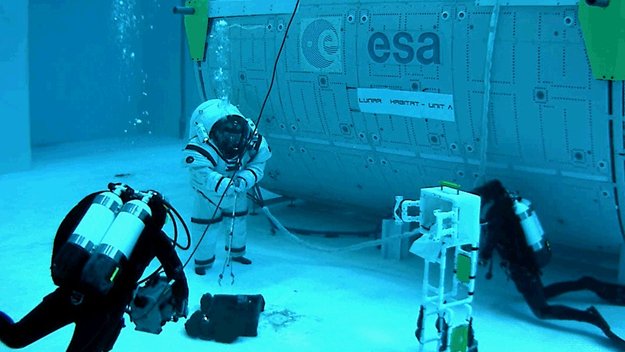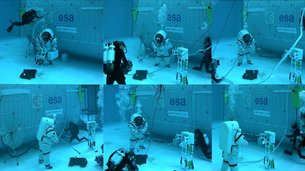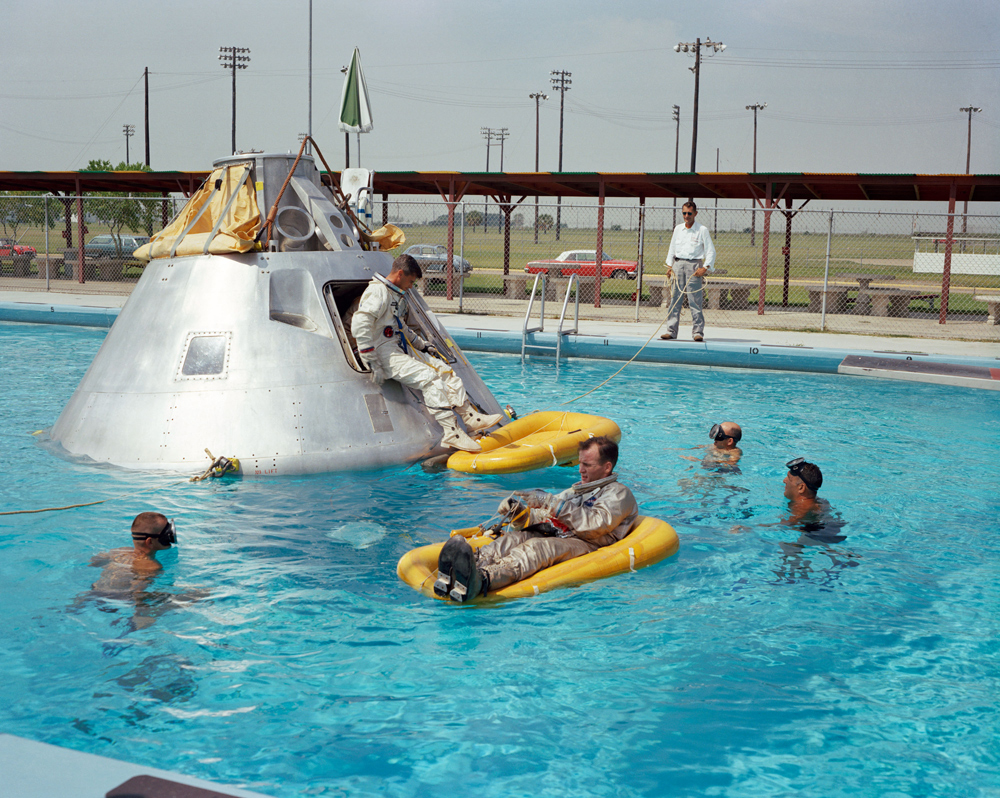Why Are Astronauts Moonwalking on the Bottom of This Giant Pool?

With government leaders and space organizations aiming to send astronauts back to the moon, how do astronauts train to work on the lunar surface? A really, really deep pool.
At the European Space Agency's (ESA) Neutral Buoyancy Facility (NBF) at the European Astronaut Centre (EAC) near Cologne, Germany, astronauts train in a unique and extreme environment. ESA's NBF houses one of the deepest swimming pools in Europe. And at the bottom of this 33-foot-deep (10 meters) pool, you'll probably find astronauts working on a simulated lunar surface.
In this pool, astronauts are participating in the "Moondive" study, in which they train for "extravehicular activity" (EVA), aka spacewalks. To prepare for such a task, they work in specially made, weighted spacesuits at the bottom of the pool, also called an immersion tank. The tank alongside the suit works to simulate lunar gravity, which is only one-sixth of Earth's gravity. There are four of these immersion tanks in the world, with the other three located in the United States, China and Russia. [Living on the Moon: What It Would Be Like (Infographic)]
"The beauty of the water immersion in the ESA-NBF is that we can simulate not only long-duration weightlessness but also partial gravity, such as [that] on the Moon or Mars, by fine-tuning the negative buoyancy of the astronauts and all of the equipment they use," Hervé Stevenin, ESA's head of EVA training and NBF operations at the EAC, said in a statement.
Images of astronauts in a pool are reminiscent of Apollo astronauts practicing their planned ocean landing with model spacecraft and swimming pools. And, in a finding that hearkens back to these early days of spaceflight, the astronauts who currently train at this facility have found that "the optimum walking strategy in this finely-tuned negative buoyancy turns out to be to kangaroo jump, just like the Apollo astronauts did on the moon," Stevenin said.
On a spacewalk, astronauts may be working on repairs on the International Space Station or even performing geological sampling on the lunar surface. Because lunar gravity is drastically different from Earth's, astronauts require extensive training to be able to work effectively in these environments. The "Moondive" study takes this into consideration, focusing especially on how to best prepare astronauts for a lunar spacewalk.
"We focused on the techniques and technology we will need to prepare astronauts for future missions to the Moon," Peter Weiss, head of the space department at Comex, a French company that specializes in the exploration of extreme environments and leads a consortium which runs "Moondive," said in the statement.
Breaking space news, the latest updates on rocket launches, skywatching events and more!
Email Chelsea Gohd at cgohd@space.com or follow her @chelsea_gohd. Follow us @Spacedotcom, Facebook and Google+. Original article on Space.com.

Chelsea “Foxanne” Gohd joined Space.com in 2018 and is now a Senior Writer, writing about everything from climate change to planetary science and human spaceflight in both articles and on-camera in videos. With a degree in Public Health and biological sciences, Chelsea has written and worked for institutions including the American Museum of Natural History, Scientific American, Discover Magazine Blog, Astronomy Magazine and Live Science. When not writing, editing or filming something space-y, Chelsea "Foxanne" Gohd is writing music and performing as Foxanne, even launching a song to space in 2021 with Inspiration4. You can follow her on Twitter @chelsea_gohd and @foxannemusic.


